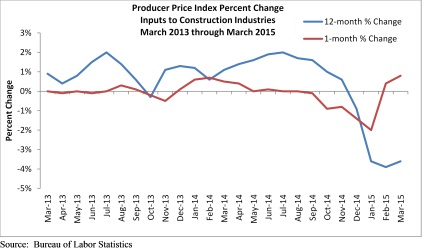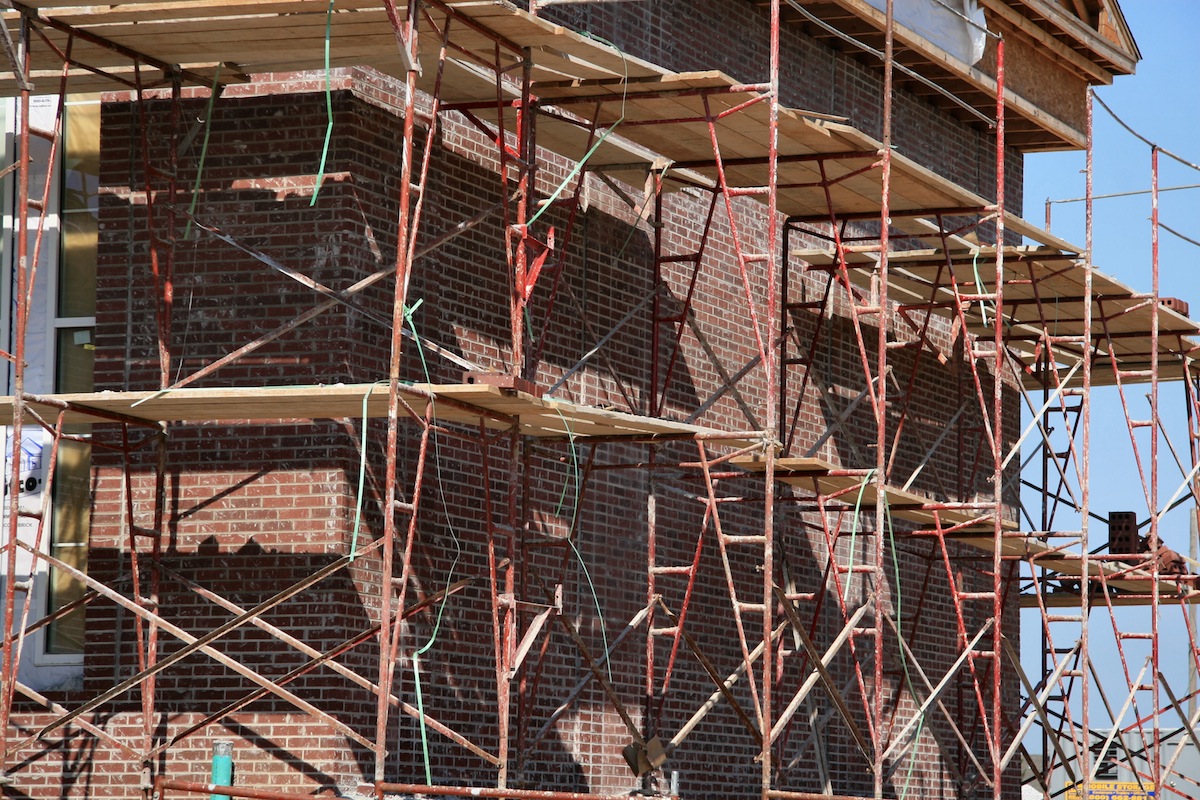Results from the Bureau of Labor Statistics showed that prices for construction materials rose 0.8% in March. According to Associated Builders and Contractors, Inc., it was the largest monthly increase in more than two years.
Prices for construction materials have risen for two straight months after falling for the previous six.
Although prices are up on a monthly basis, statistics showed that input prices are down 3.6% on a year-over-year basis, the fourth consecutive month this has occurred. The steady decline in input prices is the longest streak since 2009 as crude petroleum prices fell 4% in March and are down eight of the last nine months.
"Though U.S. nonresidential and residential segments continue to expand, global construction volumes remain suppressed by widespread weakness in Asia, Europe, and Latin America," said ABC Chief Economist Anirban Basu. "With the U.S. dollar likely to get stronger over the next few months as domestic interest rates begin to rise, there is little likelihood of significant increases in construction input prices over the next six to nine months. Overall producer prices managed to increase 0.5% on a monthly basis, the first increase since June 2014. This reading serves to increase the likelihood that the Federal Reserve will begin to increase short-term interest rates later this year."

There were only two key material categories that saw an increase in construction prices in March: fabricated strucutal metal produce prices (0.4%) and natural gas prices (1.5%).
While these two inputs rose, others fell:
- Prices for plumbing fixtures dropped 0.3% in March but remain up 2.5% year-over-year.
- The price of prepared asphalt, tar roofing, and siding dipped 0.4% in March.
- Iron and steel prices dropped 2.5% in March and are down 11.5% year-over-year.
- Prices for steel mill products slipped 1.9% in March and are down 4.8% on a yearly basis.
- Concrete products prices were flat but up 4.1% year-over-year.
- Crudge petroleum prices dropped 4% in March and are down 55% from the same time last year.
- Crude energy material costs decreased 1.4% in March and are down 43.7% from the previous year.
- Softwood lumed prices fell 4.1% and are down 7.4% year-over-year.
- Prices for nonferrous wire and cable were flat in March and rose 2.5% on a yearly basis.
To read the entire report, click here.
Related Stories
Products and Materials | Jan 31, 2024
Top building products for January 2024
BD+C Editors break down January's top 15 building products, from SloanStone Quartz Molded Sinks to InvisiWrap SA housewrap.
Sponsored | BD+C University Course | Jan 17, 2024
Waterproofing deep foundations for new construction
This continuing education course, by Walter P Moore's Amos Chan, P.E., BECxP, CxA+BE, covers design considerations for below-grade waterproofing for new construction, the types of below-grade systems available, and specific concerns associated with waterproofing deep foundations.
Sponsored | Performing Arts Centers | Jan 17, 2024
Performance-based facilities for performing arts boost the bottom line
A look at design trends for “budget-wise” performing arts facilities reveals ways in which well-planned and well-built facilities help performers and audiences get the most out of the arts. This continuing education course is worth 1.0 AIA learning unit.
Concrete | Jan 12, 2024
Sustainable concrete reduces carbon emissions by at least 30%
Designed by Holcim, a building materials supplier, ECOPact offers a sustainable concrete alternative that not only meets, but exceeds the properties of standard concrete.
Mass Timber | Jan 2, 2024
5 ways mass timber will reshape the design of life sciences facilities
Here are five reasons why it has become increasingly evident that mass timber is ready to shape the future of laboratory spaces.
75 Top Building Products | Dec 13, 2023
75 top building products for 2023
From a bladeless rooftop wind energy system, to a troffer light fixture with built-in continuous visible light disinfection, innovation is plentiful in Building Design+Construction's annual 75 Top Products report.
Products and Materials | Oct 31, 2023
Top building products for October 2023
BD+C Editors break down 15 of the top building products this month, from structural round timber to air handling units.
Building Materials | Oct 19, 2023
New white papers offer best choices in drywall, flooring, and insulation for embodied carbon and health impacts
“Embodied Carbon and Material Health in Insulation” and “Embodied Carbon and Material Health in Gypsum Drywall and Flooring,” by architecture and design firm Perkins&Will in partnership with the Healthy Building Network, advise on how to select the best low-carbon products with the least impact on human health.
Engineers | Oct 12, 2023
Building science: Considering steel sheet piles for semi-permanent or permanent subsurface water control for below-grade building spaces
For projects that do not include moisture-sensitive below-grade spaces, project teams sometimes rely on sheet piles alone for reduction of subsurface water. Experts from Simpson Gumpertz & Heger explore this sheet pile “water management wall” approach.
Building Materials | Oct 2, 2023
Purdue engineers develop intelligent architected materials
Purdue University civil engineers have developed innovative materials that can dissipate energy caused by various physical stresses without sustaining permanent damage.
















